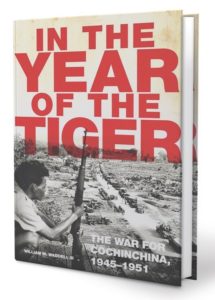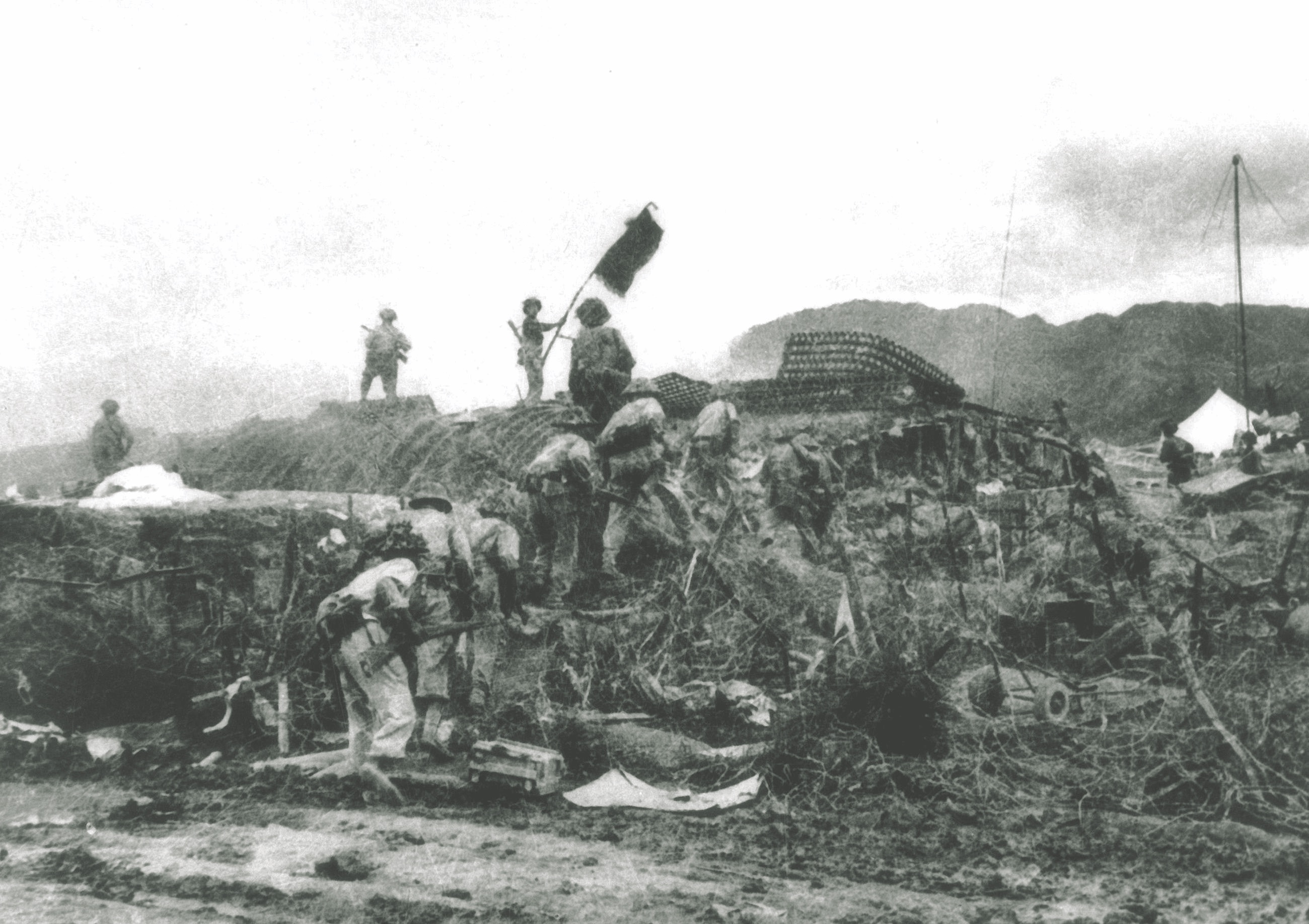 In the chaotic aftermath of World War II, as Japan relinquished its hold on Indochina, French forces seeking to reestablish control over their colony confronted a rising independence movement led by the Viet Minh, a coalition of nationalist groups under the command of communist leaders. Strongest in northern Vietnam (then known as Tonkin), where Ho Chi Minh had established the Democratic Republic of Vietnam in September 1945, the Viet Minh attacked French positions throughout the north in December 1946, initiating the First Indochina War.
In the chaotic aftermath of World War II, as Japan relinquished its hold on Indochina, French forces seeking to reestablish control over their colony confronted a rising independence movement led by the Viet Minh, a coalition of nationalist groups under the command of communist leaders. Strongest in northern Vietnam (then known as Tonkin), where Ho Chi Minh had established the Democratic Republic of Vietnam in September 1945, the Viet Minh attacked French positions throughout the north in December 1946, initiating the First Indochina War.
The French command in Indochina, governed by the principle that “every blow to the opponent in the north weakens him in the south,” believed that war in the southernmost region of Vietnam (Cochinchina)—the “centerpiece” of France’s position in Southeast Asia—would be won by destroying Viet Minh main force units in northern Vietnam. Despite the often-superb performance of French arms, a disastrous defeat at Dien Bien Phu in Tonkin on May 7, 1954, meant not only the loss of the north but also the end of France’s entire colonial empire in Indochina.
In Cochinchina, however, the First Indochina War ended very differently. French commanders, lacking the resources to pursue a high-intensity main force war, largely eschewed chasing Viet Minh units and instead pursued a limited, “resource constrained” approach designed to conserve resources and secure vital economic areas and government centers. That strategy, argues William Waddell in his book In the Year of the Tiger, allowed France to defeat Viet Minh main force units in Cochinchina and preserve the nascent Franco-Vietnamese state in the south.
“Conventional operations in Tonkin were, on the main, intended as a way to beat the Viet Minh, to force a peace,” Waddell writes. “By contrast, in Cochinchina conventional operations after early 1948 generally had as their immediate objective the destruction of transit sites, the degradation of material resources. [The French] were trying to let their own position breathe by keeping Viet Minh bands back and the roads open.”
Eventually the French position in Cochinchina began to crumble. Continued demands for manpower in the north, coupled with an ever-expanding Viet Minh main force in the south, compelled the French to abandon large swathes of the region in the summer of 1947. Gen. Pierre Boyer de Latour, hastily dispatched to Indochina that summer, concluded that his forces had to prioritize the political and economic core of Cochinchina, which included Saigon and surrounding areas.
Waddell, exploiting an extraordinary array of French-language sources, recounts the minimalist strategy Latour and his successor, Gen. Charles-Marie Chanson, adopted while reversing French fortunes on the ground in the south. Pragmatic veterans of colonial warfare, the two commanders erected a system of defenses, raised local recruits, forged alliances with powerful religious sects and used their ground and riverine forces to impose a devastating economic blockade on the Viet Minh. These measures complemented the short, sharp raids French mobile forces mounted against the enemy’s rice stockpiles and arms manufacturing facilities.
Rigidly committed to Maoist theories on revolutionary war, the Viet Minh—under charismatic communist leader Gen. Nguyen Binh—launched a massive “general offensive” in 1949-50. Binh’s well-armed, well-trained battalions attacked the very center of Cochinchina, threatening French power in the region. Chanson, however, crushed the enemy offensive by the end of 1950 and in a stroke won the Cochinchina part of the war, as Waddell deftly explains.
Significantly, In the Year of the Tiger examines this unheralded French victory within the context of the Cold War. “The American war for Vietnam and the context in which it would be fought would be determined by the dynamics of French success during the First Indochina War,” Waddell writes. “Had France lost both northern and southern portions of the country, the American war for South Vietnam might not have occurred at all.”
Waddell also challenges aspects of the existing orthodoxy—that a communist victory was inevitable, an independent “South Vietnam” was little more than a historical aberration—and in so doing presents a thoroughly illuminating, refreshingly balanced interpretation of the French war for Indochina.





